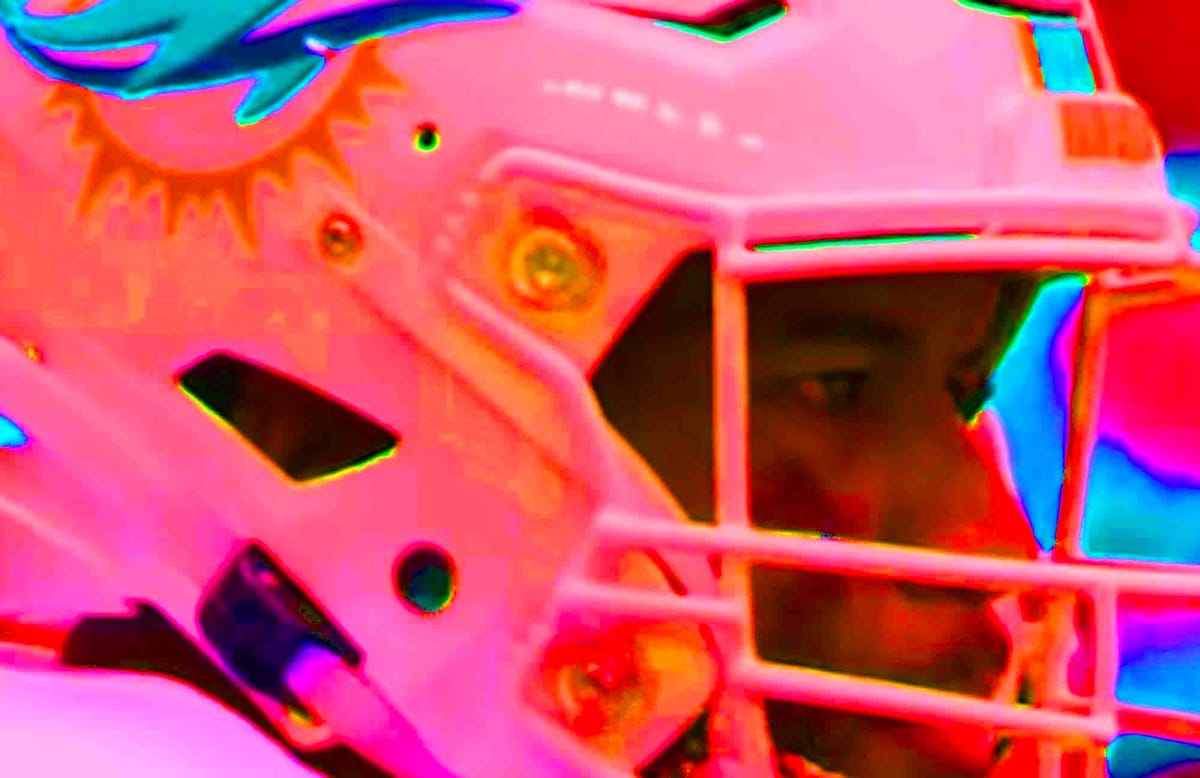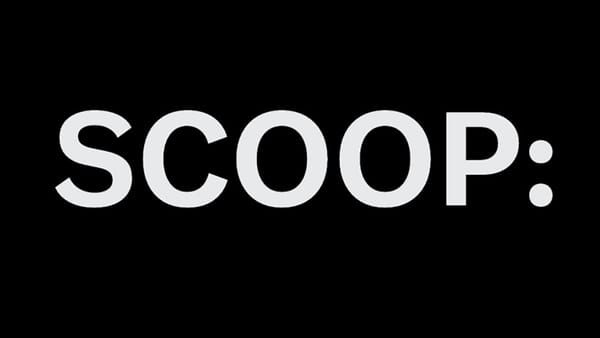Indignity Vol. 3, No. 3: Feeling No Pain
THE WORST THING WE READ THIS WEEK™

When does Tua Tagovailoa get his injury vigil?
DAMAR HAMLIN IS alive and the Buffalo Bills and the NFL are thriving. It took less than a week for the spectacle of a pro football player down on the ground with no heartbeat, swarmed by medical personnel doing CPR and defibrillation, to be transformed from a terrifying demonstration of the danger and brutality of pro football into an uplifting story.
There was never going to be any reckoning from this. Three days after he lay essentially dying on national television, terrifying his teammates and the Cincinnati Bengals into abandoning a key playoff-positioning game unfinished, Hamlin came to in the intensive care unit and, the news said, immediately asked who'd won. Three days after that, the Bills ran back the opening kickoff from the New England Patriots for a touchdown, on their way to a comfortable victory.
Football had reclaimed its place. "How One Recovery Allowed Us to Breathe a Bit," the New York Times headlined an essay in Tuesday's arts section by Michael Kimmelman, the paper's architecture critic, about the shift in the mood. Five days before, the paper's front page headline had been "Football Fans Forced to Weigh Their Love for a Violent Sport." Now the weighing was over.
"Like the movies and other forms of popular culture, football is a national barometer, after all," Kimmelman wrote: "And the last week seems to have illuminated the country's erratic condition—the violence but also the longing, or at last the posture of longing, for unity in polarizing times."
The NFL does achieve unity. It dominates the television ratings, Kimmelman noted, to an almost unreal extent, producing "a whopping 82 of the 100 most-watched television broadcasts last year."
The same day Kimmelman's essay arrived in the newspaper, another piece of display copy on the same theme caught my eye. It was on the website of the Rochester Democrat & Chronicle, as a caption to an embedded video, and it read: "Buffalo Bills fans show their hearts for injured player Damar Hamlin."
The story it was embedded in struck a different tone:
ORCHARD PARK — In case you were wondering how much quarterback Tua Tagovailoa is perceived to mean to the Miami Dolphins, the early point spreads — yes, plural — would certainly reflect that it’s a sizable one.
One gambling site decided on Sunday night that once the Dolphins finished off their hideous 11-6 victory over the Jets and the Buffalo Bills defeated the Patriots to finalize their AFC wild-card matchup, it would post point spreads based on which Miami quarterback might be playing in the game.
If Tagovailoa, who has missed the last two games while in the NFL’s concussion protocol, emerges this week and is able to play, the Dolphins are listed as 7-point underdogs.
If he can’t play, and backup Teddy Brid[g]ewater is recovered enough from the broken thumb he suffered in Week 17 at New England to start, the Dolphins are 10-point underdogs.
And if neither can play and the Dolphins have to go with rookie Skylar Thompson, the spread balloons to 14 points.
Here, in one of Hamlin’s Bills’ local papers, was NFL culture spinning away from the grasp of near-tragedy and finding its stride again. Bills fans may be hanging on every development in Hamlin's case with a mixture of civic love and hope, but the Bills have a playoff game coming up, and that called for different considerations—such as whether or not Tua Tagovailoa would be cleared to play, despite a serious head injury. Money would be riding on the question.
Whether or not Tagovailoa should play was not part of the discussion. Tagovailoa went on the injured list because he got pulled down by a Green Bay Packers player in a December game, and the back of his helmet banged into the ground. Under the league's "concussion protocol," the Dolphins medical staff deemed him not to be suffering any noticeable head-trauma symptoms and left him in to finish the game, then declared the next day that he had suffered a concussion.
A joint statement released by the NFL and the NFL Players Association said that both organizations "established that symptoms of a concussion were neither exhibited nor reported until the following day." That was not exactly how reporting from Yahoo News described the sequence of events:
Tagovailoa was placed in concussion protocol after head coach Mike McDaniel reviewed film Monday. McDaniel said he noticed some oddities on tape, which prompted the team to question Tagovailoa about the game. The team felt Tagovailoa should speak with medical professionals following those questions.
Even though McDaniel was able to see irregularities in Tagovailoa's behavior on the game film, the league and the players union were comfortable declaring that Tagovailoa had not "exhibited" any symptoms in that game. Either way, in his follow-up exam, Tagovailoa reportedly did display memory loss, and he was benched for the rest of the regular season.
And all of this happened after Tagovailoa had already caused the NFL to revise its head-injury policies once this season. In a Dolphins–Bills game in September, he got pushed down after throwing a pass and, just as would happen in the Packers game, hit the back of his helmet on the ground. He got up and tried to walk back upfield, and his legs crumpled under him. The Dolphins called it a head injury at first, then claimed it was really a back injury, and returned him to the game for the second half.
Four days later, on short turnaround, Miami sent Tagovailoa out to start a Thursday night game against the Bengals. He got thrown down again, and the back of his head hit the ground again. That time, as he lay there, his arms clenched and his hands twisted spasmodically in front of his face—the involuntary posture clinically known as the "fencing response," caused by brain trauma.
Tagovailoa's on-field spasm was the first thing I thought of when I heard the news about Hamlin. The instant consensus was that something unbearable, far beyond normal, had happened. Had it? Going into full cardiac arrest is, I suppose, some degree worse than losing control of your limbs from brain injury, but both seemed as if they ought to be far over the line where entertainment would give way to horror.
Yet Tagovailoa's injuries were simply absorbed into the flow of the season. The NFL decided to add ataxia, the loss of motor control Tagovailoa displayed when he stumbled after his original head injury, to the official list of neurological symptoms that would require a player to be removed from a game. The first NFL player to be officially pulled from the action for showing ataxia was Teddy Bridgewater, Tagovailoa's replacement, who was "spotted stumbling after being hit on his first pass of the game."
The real difference between Hamlin and Tagovailoa was that Hamlin's injury appears to have legitimately been a freak occurrence. Medical experts who saw the incident believed that Hamlin's heart was knocked out of rhythm because he suffered an impact at exactly the wrong place in his chest at exactly the wrong part of the heartbeat cycle—an event that's much more likely to kill someone playing baseball, hockey, or lacrosse than football. It's plausible that Hamlin is alive now because the impact happened on an NFL field, where a fully equipped emergency medical squad was ready to respond.
Tagovailoa's injuries, meanwhile, were precisely what happens to quarterbacks, again and again, year after year. The NFL has added protective rules through the decades to try to discourage the most savage hits, but the quarterback's job is to make plays and to sometimes get knocked down while making them. Even if he doesn't get knocked down, the speed and force of the game are inherently hostile to the body. Bridgewater is around to be Tagovailoa's backup because he ruined his own budding superstar career, and nearly lost his leg, when he violently dislocated his knee while simply running a play in practice in 2016.
On Wednesday, the Dolphins ruled Tagovailoa out for the Bills game. Bridgewater was listed as "questionable." No one was holding their breath about the human drama. Someone will play quarterback for the Dolphins against the Bills, and Vegas will set the price of meat accordingly. Other players will block for that quarterback, or try to tackle them, banging together on each play, quietly accumulating the majority of the brain damage in the league without even rating a replay. Someday, when the cameras are off, they'll be lost in a fog, or just limping at age 40 from the gradual orthopedic ruin. The game will go on without them. We wouldn't have it any other way.

Thank you for reading Indignity! We appreciate your interest and support, and we encourage you to find more of our work over at Popula.





